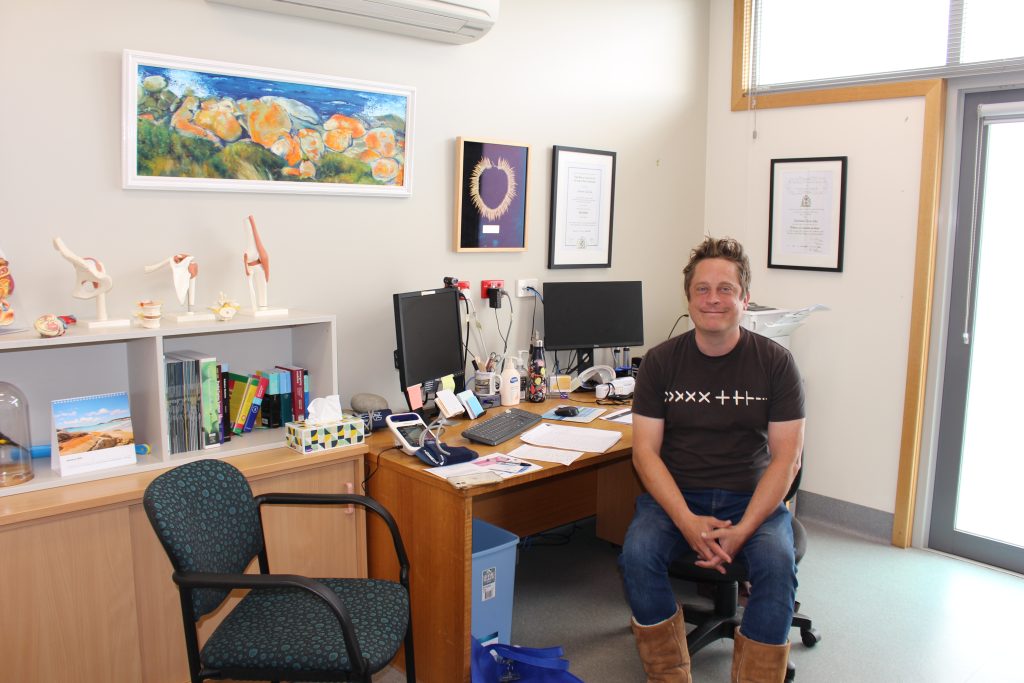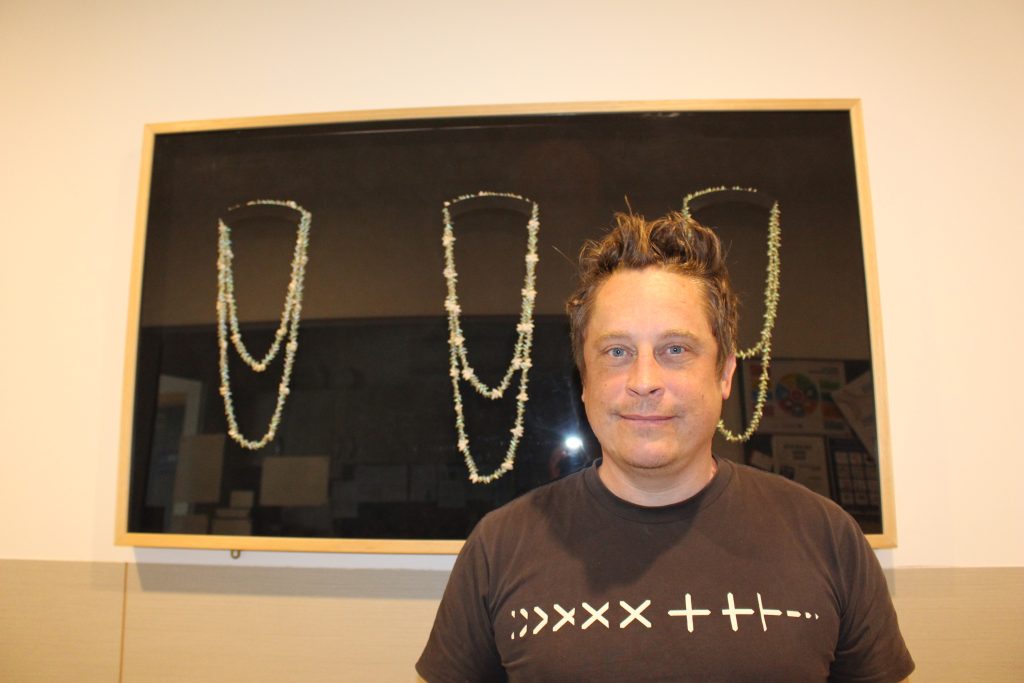Get to know: Dr Alex John
Posted on August 8, 2024

Content warning: Aboriginal and Torres Strait Islander people should be aware that this article contains the name of a deceased person.
Dr Alex John is a rural generalist with diverse medical experience. He completed his medical studies at University College London in 2002,completed a three-year surgical rotation in England, and passed examinations to become a Member of the Royal College of Surgeons of England.
Since arriving in Australia in 2008, Alex has been practising as the principal GP on remote islands, drawn to the unique lifestyle they offer. This includes Norfolk Island in the South Pacific and King, Flinders and Cape Barren islands in Tasmania.
Currently, Alex is a GP at the Ochre Medical Centre on Flinders Island, runs the island’s small hospital (part of the Flinders Island Multipurpose Centre), and provides emergency care to both Flinders Island residents and the Indigenous community on nearby truwana/Cape Barren Island.
Recently, Alex was named Ochre Health 2023 Tasmanian Doctor of the Year, and also won the inaugural Dennis Pashen Ochre Australian Doctor of the Year award.
What is it like being a GP on Flinders Island?
It’s remote medicine; it’s not like a normal GP job in a city or big town. We’re kind of all-rounder doctors, to use a cricket metaphor: we bat, bowl, field and are sometimes the wicket keeper too! We’re on call 24 hours a day, and we live here, we’re part of the community.
There’s lots of stuff we can do here and get to manage by ourselves. It’s different to being in a city where everyone has really defined roles. If somebody has a heart attack and they come in, as the transfer time can be long, we do the initial management, meaning we thrombolyse them, and then we wait for the Royal Flying Doctor Service plane to come in and transfer them to cardiology.
Occasionally babies get born here, although not very often, which is good as it is stressful!
We have an aged care facility at the hospital, which is called Shearwater Haven. Of course, people die here, so we do palliative care. That’s one of the beautiful parts of the job, helping people you have known in the community at the end of their life.
moekatan (Australian name Bernice Condie or ‘Aunty Bea’), who was one of the Elders in the community, donated a traditional shell necklace to the community hospital. I was actually down at the beach with my kids one day when Aunty Bea was collecting these shells. She showed us how to do it and then I looked after her when she died.
I have a beautiful necklace made of echidna quills that has pride of place in my clinic room. The echidna necklace was made by Aunty Vicky (maikutena Vicki-Laine Green). She is still alive and is one of the Elders. It’s amazing and has pride of place in my clinic room.
Do you work in the hospital and the GP practice?
Yes, we do both. It’s kind of an artificial thing to say that they’re separate. Either we’re here in the hospital most of the day, or in the practice. They’re conjoined, so it doesn’t even need to have that distinction. It’s just really to do with funding.
What is the work like on Cape Barren Island?
truwana/Cape Barren Island is such a cool place. Most of the island is actually owned by Aboriginal people of the island, which I think is unique in Tasmania.
We give phone advice to the island’s residents and then we travel over there once a week by plane. And it’s hard work. To give you an idea, there’s 100 people living on truwana. Then on Flinders, there’s 1000 people. We get as many calls from truwana as we do from Flinders.
The chronic disease burden is complex, and I do feel like they get forgotten about over there.
What are the hardest things about the work and living in the community?
I’m here on the islands all the time, and I’m not very connected to what’s going on off-island.
We turn up at conferences and it often feels as if nobody knows us; it’d be great if people could think about us a bit more, and if we could be a bit better known. Particularly the people on truwana.
Probably the hardest thing is looking after yourself and family, or if you or your family gets sick. I haven’t totally worked that one out yet.
How do you work with other health professionals?
We’ve got a really good team here, really great nursing staff, three really good doctors and are well supported by Ochre Health which is really fortunate in rural Tasmania.
I work with Dr Lynne Davies and Dr Emilie Willcox, the other doctors. Lynne, her son, his wife and Lynne’s granddaughter all live here. Emilie has a young family, and they live here too. Her husband’s a teacher at the school.
I worked here on my own for about seven or eight years and since they’ve been here, it’s been brilliant. I really appreciate them both.
I reckon we’re a model for everywhere. We sit down, we have meetings, we talk in the morning, we do research. We’re always learning and evolving.
We’ll have the doctors, the community nurse, hospital nurse, Royal Flying Doctor Service staff, people from the Flinders Island Aboriginal Association Incorporated (FIAAI) come together. We sit around the table, and we discuss what can we do to help the different clients. We do case conferencing at least once a month. And I go to FIAAI every two weeks.
Somehow, we’ve managed to build this team.
It was hard to get it going at the beginning, but it’s gaining a bit of momentum, so a lot has changed. We’ve got loads of ideas. Stuff is happening and changing and getting better.

This story features in Issue 18 of our Primary Health Matters magazine. Click here to read the rest of the issue.
